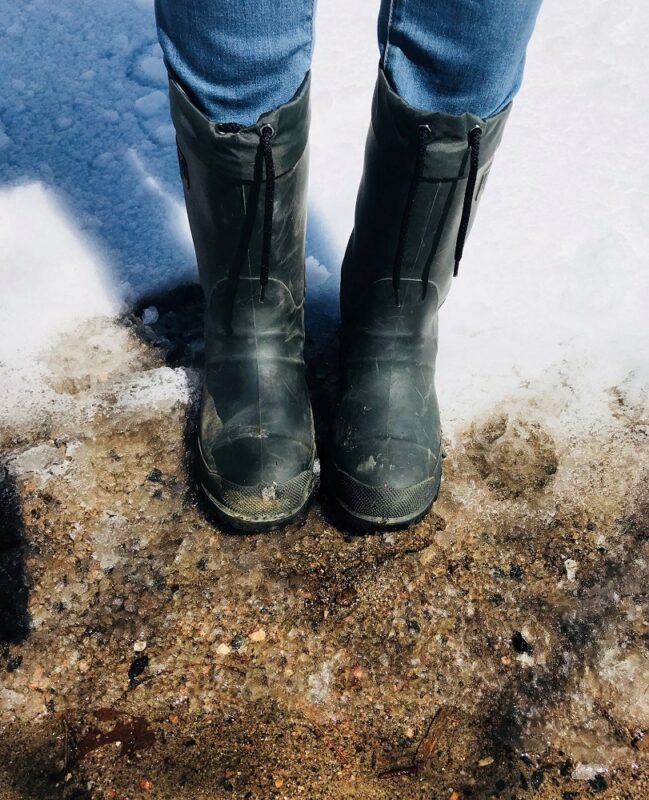Watching winter slip away is a magical thing. Snow is melting, temperatures are warming, and some of our fair-weather bird friends are returning.
However, Ontario is a huge province, and the arrival of spring looks very different depending on where you are.
Spring comes slowly in many provincial parks.
Every year people are surprised to learn that while urban areas may be in bloom, many provincial parks, such as Algonquin, are still covered in snow and ice.
This can lead to some unwelcome surprises and unsafe situations for visitors who are expecting warm weather and spring-like conditions.

If you’re day-tripping or camping at a park in central / northern Ontario this spring, there are a few important things to keep in mind:
Temperatures may still be wintry
Weather is unpredictable. Snow flurries are common, even in April, May, and June. Overnight temperatures, in particular, can be downright frosty.
Many campsites still have snow and ice cover well into the spring. You may be picturing setting up your tent on a grassy site, and instead find fully frozen ground.

No matter if you’re coming for the day or for an overnight stay, it’s essential that you:
- check the weather (including the overnight temperatures) for that specific area, and be prepared for sudden changes
- pack for cold temperatures (shoes to sleeping bags)
- know your limits and stay within them
- educate yourself on spring camping safety and winter emergency preparedness
A biting cold
Ice can take weeks to break up.

Many lakes remain frozen until late April, which might not be the scenic spring view you were expecting.
Water temperatures can be dangerously cold in the spring. This creates an extra risk of hypothermia and other safety issues.

Water levels in creeks, rivers, and streams can be higher (or rise rapidly) in the spring, and currents can be strong and fast. Take extra precautions to be safe and always wear a PFD when near water.
Mud and mess, oh my!
It’s not an exaggeration that “mud” should be its own season in many parts of Ontario. Snow can melt, and the ground can dry up quickly in southern parts of the province, but it’s a much more lengthy (and messy) process farther north.

Trails could be covered in ice and snow well into May. Many trails and portages are insulated by dense woods, and it takes a lot longer for spring to arrive in these areas.

Thawing during the day and freezing overnight when temperatures drop creates some messy and unpredictable conditions on roads and trails. The right footwear is essential as trails can be a combination of ice, snow and deep slippery messy mud. It’s way too soon to bust out your sandals.
Many roads in parks are not maintained until the spring thaw is complete. You could encounter roads that are icy, muddy, or impassable, depending on local conditions.
Not always a walk in the park
We get it. After a long cold winter, everyone is looking forward to getting outside.
But spring in parks isn’t always a walk in the park, so please be prepared.

Plan and pack for the temperature and weather forecast, not for the date on the calendar.
Conditions can vary greatly, and you could be in for a big frosty surprise if you are not prepared.
